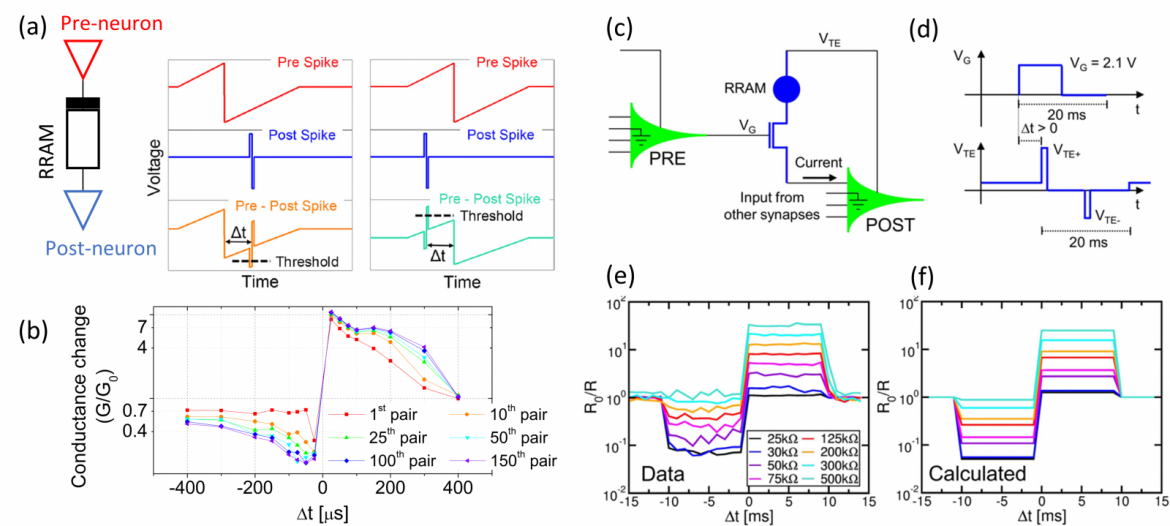
HfO2-based resistive switching memory (RRAM) combines several outstanding properties, such as high scalability, fast switching speed, low power, compatibility with complementary metal-oxide-semiconductor technology, with possible high-density or three-dimensional integration. Therefore, today, HfO2 RRAMs have attracted a strong interest for applications in neuromorphic engineering, in particular for the development of artificial synapses in neural networks. This review provides an overview of the structure, the properties and the applications of HfO2-based RRAM in neuromorphic computing. Both widely investigated applications of nonvolatile devices and pioneering works about volatile devices are reviewed. The RRAM device is first introduced, describing the switching mechanisms associated to filamentary path of HfO2 defects such as oxygen vacancies. The RRAM programming algorithms are described for high-precision multilevel operation, analog weight update in synaptic applications and for exploiting the resistance dynamics of volatile devices. Finally, the neuromorphic applications are presented, illustrating both artificial neural networks with supervised training and with multilevel, binary or stochastic weights. Spiking neural networks are then presented for applications ranging from unsupervised training to spatio-temporal recognition. From this overview, HfO2-based RRAM appears as a mature technology for a broad range of neuromorphic computing systems.
The paper is available as open access in Neuromoprhic Computing and Engineering
Figures (a) and (b) are reproduced from Covi E, Brivio S, Serb A, Prodromakis T, FanciulliM and Spiga S 2016 Analog memristive synapse in spiking networks
implementing unsupervised learning Front. Neurosci. 10 482 under CC-BY 4.0. (c)–(f) are reproduced from Ambrogio S, Balatti S,Milo V, Carboni R, Wang Z Q, Calderoni A, Ramaswamy N and Ielmini D 2016 Neuromorphic learning and recognition with one-transistor–one-resistor synapses and bistable metal oxide RRAM, IEEE Trans. Electron Devices 63 1508–15 under CC-BY 4.0.


